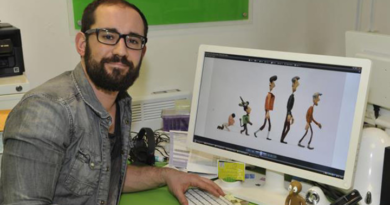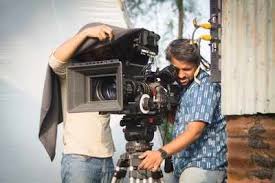What Is Roto Artist? How Do I Learn Rotoscoping?
Roto Artist:
A Roto Artist, also known as a Rotoscope Artist or a Rotoscoper, is a professional in the field of post-production in the film and animation industry. The term “Roto” is short for Rotoscoping, which is a process of creating a matte or mask for a particular object or element in a video or film. The Roto Artist’s primary role is to trace around the object or element in a video frame to create an accurate matte, which can then be used to composite or add visual effects to the scene.
The Roto Artist’s job is essential in creating seamless and believable visual effects in films, TV shows, and commercials. The role of a Roto Artist is often underestimated, but it is a critical aspect of post-production. They work in conjunction with other professionals such as Compositors, VFX Supervisors, and 3D Artists to create stunning visual effects for films and animations.
A Roto Artist’s work involves analyzing the footage, frame by frame, to isolate the object or element that requires rotoscoping. They use specialized software such as Nuke, After Effects, or Silhouette to create the matte. The software allows them to trace the object with precision while maintaining its edge quality and smoothness. They also have to ensure that the matte is accurate and seamless to blend with the footage correctly.

Roto Artists use various techniques to create a matte for the object or element, depending on the complexity of the scene. Some of the techniques they use include:
- Hand-drawn Rotoscoping: This is the traditional rotoscoping technique that involves drawing around the object or element frame by frame using a tablet or mouse.
- Automated Rotoscoping: This technique involves using software to automatically create a matte for the object or element. The software uses algorithms to track the object’s movement in the frame and create a matte based on the movement.
- Roto Painting: This technique involves painting the matte manually using a brush tool in the software. This technique is useful when working with complex shapes or when the object or element is moving too fast for traditional rotoscoping.
- Planar Tracking: This technique is used when the object or element moves in a straight line or has a flat surface. The software uses planar tracking to create a matte based on the object’s movement in the frame.
Once the Roto Artist has created the matte, they have to ensure that it is seamless and blends well with the footage. They use tools such as feathering, blur, and color correction to match the matte with the footage’s lighting and color. They also have to ensure that the matte is accurate and does not show any gaps or inconsistencies when played back with the footage.
Roto Artists also work on a variety of projects that require their expertise, including:
- Removing wires and rigs from actors during stunts or wirework scenes.
- Creating digital makeup for actors, such as changing the color of their eyes, hair, or skin.
- Isolating characters or objects from the background to create a new environment or add visual effects.
- Creating animated characters and creatures.
- Adding or removing objects or elements from a scene, such as adding explosions, smoke, or fire.
In conclusion, a Roto Artist plays a crucial role in the post-production process of films and animations. They work to create accurate mattes for objects and elements in a video or film, which can then be used to add visual effects and composites. Their work is essential in creating seamless and believable visual effects that enhance the audience’s viewing experience. A Roto Artist needs to have a keen eye for detail, excellent hand-eye coordination, and a strong understanding of software such as Nuke, After Effects, or Silhouette.
How Do I Learn Rotoscoping?
Learning Rotoscoping can be an excellent starting point for anyone interested in pursuing a career in the film and animation industry. Rotoscoping is a vital skill in creating visual effects, and it requires a combination of technical and artistic abilities. In this article, we will explore some of the steps you can take to learn Rotoscoping.

Step 1: Understand the Basics of Rotoscoping
Before you dive into learning Rotoscoping, it’s essential to have a basic understanding of what it is and how it works. As mentioned earlier, Rotoscoping is the process of creating a matte or mask for a particular object or element in a video or film. The matte is then used to composite or add visual effects to the scene. Understanding the fundamentals of Rotoscoping will give you a solid foundation to build on as you learn more advanced techniques.
Step 2: Learn the Tools and Software
To become proficient in Rotoscoping, you will need to learn the tools and software used in the industry. Some of the most popular software used in Rotoscoping include Nuke, After Effects, and Silhouette. These software applications allow you to create accurate mattes with precision while maintaining edge quality and smoothness. There are also various plugins and tools available that can help speed up the Rotoscoping process.
Step 3: Practice Rotoscoping Techniques
One of the best ways to learn Rotoscoping is to practice the techniques. Start with simple objects and work your way up to more complex ones. Rotoscoping requires patience and attention to detail, so take your time and don’t rush the process. It’s also essential to understand the different techniques used in Rotoscoping, such as hand-drawn Rotoscoping, automated Rotoscoping, Roto painting, and planar tracking.
Step 4: Watch Tutorials and Take Courses
Watching tutorials and taking courses can be an excellent way to learn Rotoscoping. There are various online resources available, such as YouTube videos, online courses, and forums where you can learn from industry professionals. Many of these resources are free, while others require payment. It’s essential to do your research and find reputable resources to ensure you’re learning the correct techniques and processes.
Step 5: Build Your Portfolio
As you become more proficient in Rotoscoping, it’s essential to build your portfolio. Your portfolio should showcase your skills and highlight your best work. It’s also a great way to demonstrate your creativity and problem-solving skills. Building your portfolio takes time and effort, but it can pay off in the long run by helping you land jobs and freelance work.

Step 6: Networking
Networking is crucial in any industry, including the film and animation industry. Building relationships with other professionals can open up new opportunities and help you learn from experienced professionals. Attend industry events, conferences, and trade shows to meet other professionals and learn more about the industry.
In conclusion, learning Rotoscoping takes time, effort, and dedication. It’s essential to understand the basics of Rotoscoping, learn the tools and software used in the industry, practice Rotoscoping techniques,watch tutorials, and take courses, build your portfolio, and network with other professionals. By following these steps, you can develop the skills and knowledge necessary to become a proficient Rotoscoper and pursue a career in the film and animation industry.
Roto Artist:
A Roto Artist, also known as a Rotoscope Artist or a Rotoscoper, is a professional in the field of post-production in the film and animation industry. The term “Roto” is short for Rotoscoping, which is a process of creating a matte or mask for a particular object or element in a video or film. The Roto Artist’s primary role is to trace around the object or element in a video frame to create an accurate matte, which can then be used to composite or add visual effects to the scene.
The Roto Artist’s job is essential in creating seamless and believable visual effects in films, TV shows, and commercials. The role of a Roto Artist is often underestimated, but it is a critical aspect of post-production. They work in conjunction with other professionals such as Compositors, VFX Supervisors, and 3D Artists to create stunning visual effects for films and animations.
A Roto Artist’s work involves analyzing the footage, frame by frame, to isolate the object or element that requires rotoscoping. They use specialized software such as Nuke, After Effects, or Silhouette to create the matte. The software allows them to trace the object with precision while maintaining its edge quality and smoothness. They also have to ensure that the matte is accurate and seamless to blend with the footage correctly.

Roto Artists use various techniques to create a matte for the object or element, depending on the complexity of the scene. Some of the techniques they use include:
- Hand-drawn Rotoscoping: This is the traditional rotoscoping technique that involves drawing around the object or element frame by frame using a tablet or mouse.
- Automated Rotoscoping: This technique involves using software to automatically create a matte for the object or element. The software uses algorithms to track the object’s movement in the frame and create a matte based on the movement.
- Roto Painting: This technique involves painting the matte manually using a brush tool in the software. This technique is useful when working with complex shapes or when the object or element is moving too fast for traditional rotoscoping.
- Planar Tracking: This technique is used when the object or element moves in a straight line or has a flat surface. The software uses planar tracking to create a matte based on the object’s movement in the frame.
Once the Roto Artist has created the matte, they have to ensure that it is seamless and blends well with the footage. They use tools such as feathering, blur, and color correction to match the matte with the footage’s lighting and color. They also have to ensure that the matte is accurate and does not show any gaps or inconsistencies when played back with the footage.
Roto Artists also work on a variety of projects that require their expertise, including:
- Removing wires and rigs from actors during stunts or wirework scenes.
- Creating digital makeup for actors, such as changing the color of their eyes, hair, or skin.
- Isolating characters or objects from the background to create a new environment or add visual effects.
- Creating animated characters and creatures.
- Adding or removing objects or elements from a scene, such as adding explosions, smoke, or fire.
In conclusion, a Roto Artist plays a crucial role in the post-production process of films and animations. They work to create accurate mattes for objects and elements in a video or film, which can then be used to add visual effects and composites. Their work is essential in creating seamless and believable visual effects that enhance the audience’s viewing experience. A Roto Artist needs to have a keen eye for detail, excellent hand-eye coordination, and a strong understanding of software such as Nuke, After Effects, or Silhouette.
How Do I Learn Rotoscoping?
Learning Rotoscoping can be an excellent starting point for anyone interested in pursuing a career in the film and animation industry. Rotoscoping is a vital skill in creating visual effects, and it requires a combination of technical and artistic abilities. In this article, we will explore some of the steps you can take to learn Rotoscoping.

Step 1: Understand the Basics of Rotoscoping
Before you dive into learning Rotoscoping, it’s essential to have a basic understanding of what it is and how it works. As mentioned earlier, Rotoscoping is the process of creating a matte or mask for a particular object or element in a video or film. The matte is then used to composite or add visual effects to the scene. Understanding the fundamentals of Rotoscoping will give you a solid foundation to build on as you learn more advanced techniques.
Step 2: Learn the Tools and Software
To become proficient in Rotoscoping, you will need to learn the tools and software used in the industry. Some of the most popular software used in Rotoscoping include Nuke, After Effects, and Silhouette. These software applications allow you to create accurate mattes with precision while maintaining edge quality and smoothness. There are also various plugins and tools available that can help speed up the Rotoscoping process.
Step 3: Practice Rotoscoping Techniques
One of the best ways to learn Rotoscoping is to practice the techniques. Start with simple objects and work your way up to more complex ones. Rotoscoping requires patience and attention to detail, so take your time and don’t rush the process. It’s also essential to understand the different techniques used in Rotoscoping, such as hand-drawn Rotoscoping, automated Rotoscoping, Roto painting, and planar tracking.
Step 4: Watch Tutorials and Take Courses
Watching tutorials and taking courses can be an excellent way to learn Rotoscoping. There are various online resources available, such as YouTube videos, online courses, and forums where you can learn from industry professionals. Many of these resources are free, while others require payment. It’s essential to do your research and find reputable resources to ensure you’re learning the correct techniques and processes.
Step 5: Build Your Portfolio
As you become more proficient in Rotoscoping, it’s essential to build your portfolio. Your portfolio should showcase your skills and highlight your best work. It’s also a great way to demonstrate your creativity and problem-solving skills. Building your portfolio takes time and effort, but it can pay off in the long run by helping you land jobs and freelance work.

Step 6: Networking
Networking is crucial in any industry, including the film and animation industry. Building relationships with other professionals can open up new opportunities and help you learn from experienced professionals. Attend industry events, conferences, and trade shows to meet other professionals and learn more about the industry.
In conclusion, learning Rotoscoping takes time, effort, and dedication. It’s essential to understand the basics of Rotoscoping, learn the tools and software used in the industry, practice Rotoscoping techniques,watch tutorials, and take courses, build your portfolio, and network with other professionals. By following these steps, you can develop the skills and knowledge necessary to become a proficient Rotoscoper and pursue a career in the film and animation industry.







